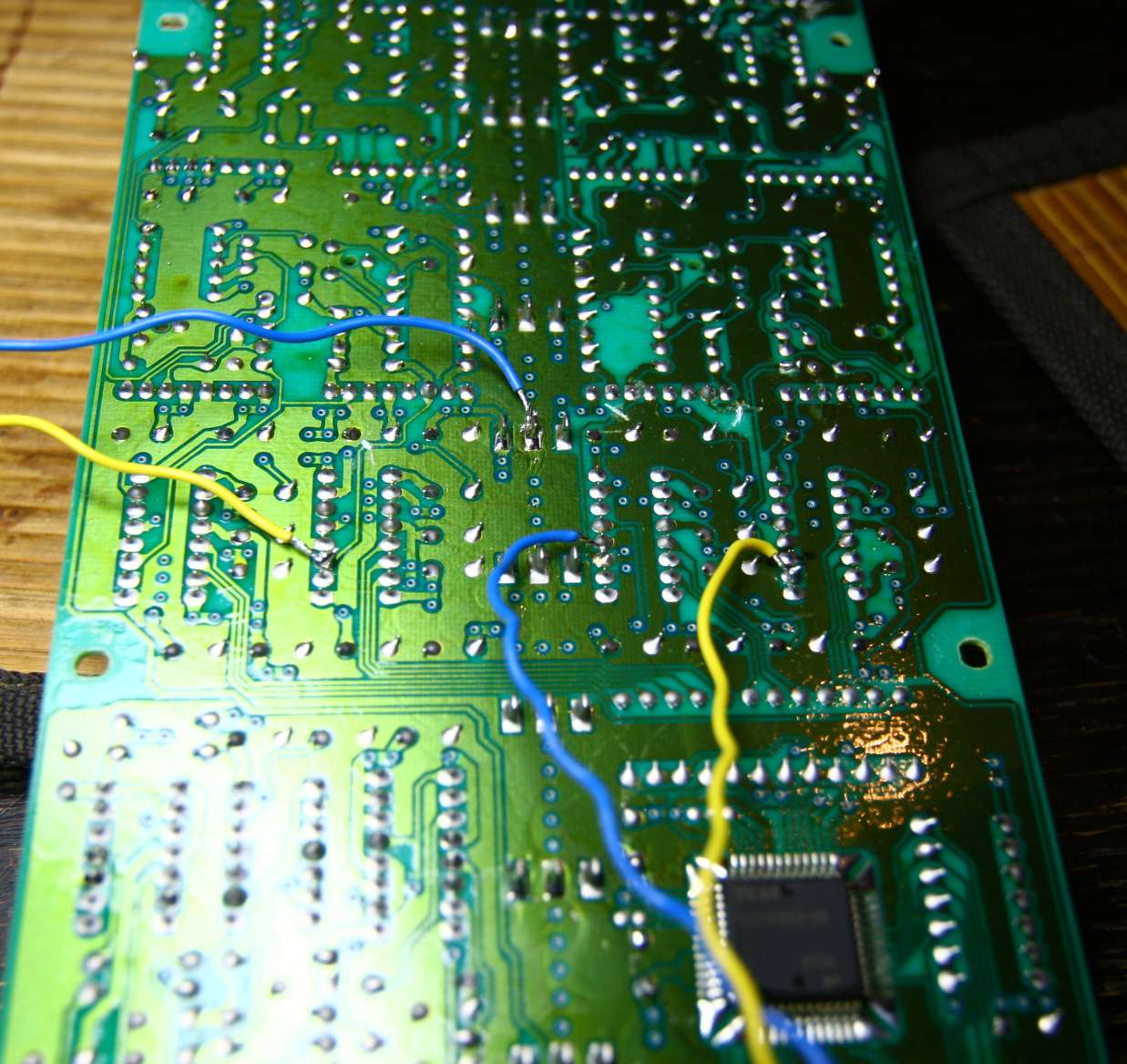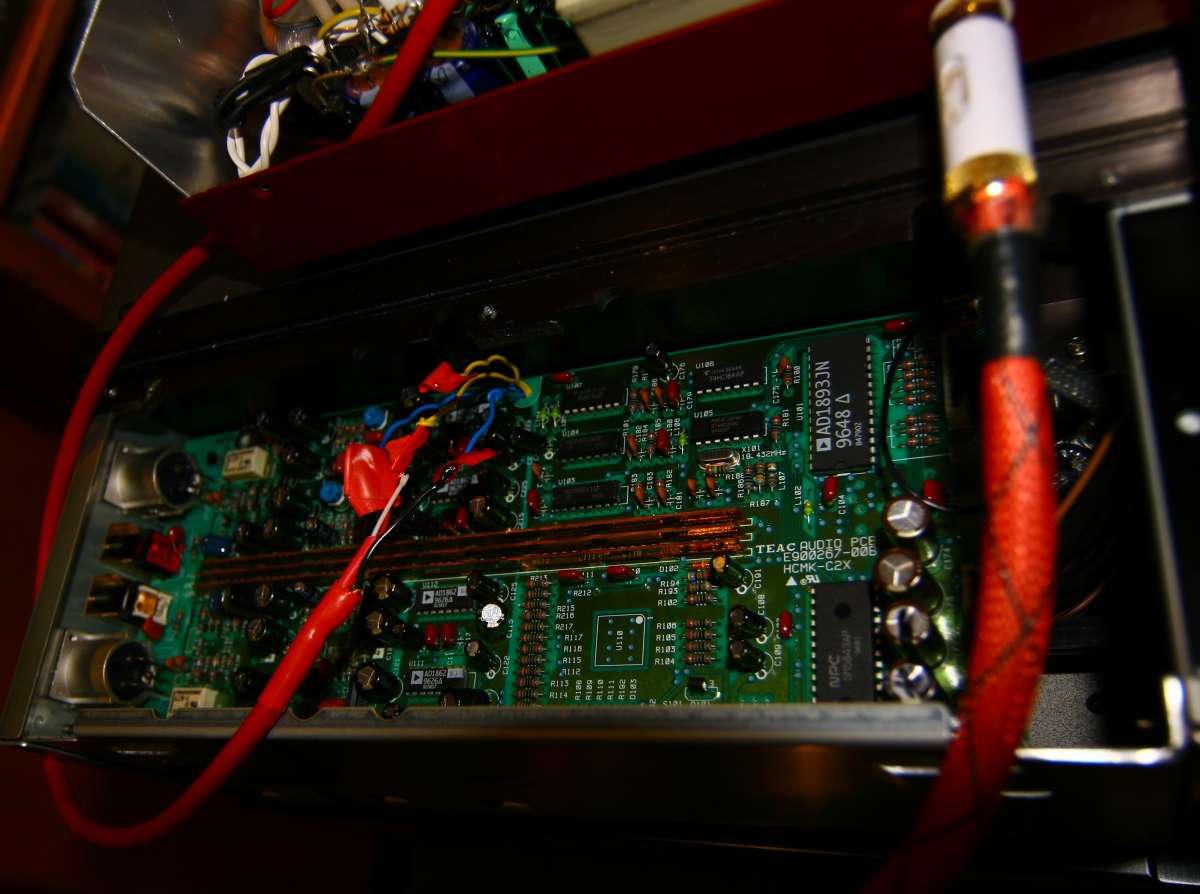VRDS-X25 from TEAC
Feb 2009
The owner of described one year ago TEAC VRDS25
wanted to upgrade to the X modell.
So he spent 1000 Eu to buy it on ebay.
I was very gentle and kind but I had to disappoint him: these are THE
SAME players.
The mechanism - mid range VRDS from composites is the same
Chassis and box is the same
Set of features is the same
Remote is the same
PCB is the same.
Power supply is the same.
I only detected some very small add on PCB which I dont't know what is
for.
Generally the upgrade is NOT WORTH the 1000 Euro for sure.
As far as I am concerned, Teac can go and stuff themselves with the X.
I vote for the plain 25.
As already explained, the inside of TEAC is looking excellent. Very
positive impression, really. Premium parts, audio grade
electrolytes, very very
neat auto cad of PCB layout, fully differential balanced topology and
OH MY GOD - the AD1862 super
duper chip. What a rare DAC. A white raven. To be found only in world's
best players, like for example in the best denon - the 2560.
This DAC has current output (the better, more kosher type) and it can
be lampized with R conversion. I used 570 Ohms which I had on hand.
I quickly cut the leg 11 of the chip from the PCB track (I mean I cut
the track leading from leg 11 to next parts - 4 opamps in a row.)
I wired the now freely floating leg 11 to lampizator leg 7 and then
from leg 7 to leg 9 - a resistor of 570 Ohms.
I used 4 triodes (two double tubes|) to obtain fully balanced quadruple
signal.
Lampization is possible as SE ( RCA) and balanced XLR at
the same time.

I quite like plain and simple face plates like this one. The only minor
reservation in this played rating is very slow drawer.

Great PCB - neat, simple, beautiful - everything is first class. Hats
off.
ASD-Audiotuning company from Germany offers upgrade replacement chips
for these two suckers on the picture's right - the demodulator and the
upsampler- NPC and the AD1893. The better parts from Mr. Andreas (we
paid some 100 Euro plus) are 24/192 compatible and the DAC is a
20 bit one. The clock is not typical - 18 ,xx meg. The upgrade allows
to squeeze the max from the 1862 DAC. It took me 10 minutes do de
solder and solder the upgrade.
I suspect that 1862 is the same as Burr Brown 1702. Something is
telling me ....

Enter Analog
Devices AD1862 N-J DAC chip
Four DAC chips in
a row. Mmmmmmm. Nice. One per channel per phase. They
go like this from bottom of the photo : L-, L+, R+, L-. I took
the signal from the inner pair.

Please ignore the most right yellow wire - my mistake (left channel
phase neg). Top-most blue wire is the earth.

Test hookup of the lampizator. (traces are cut underneath the board to
free the leg 11 of the DAC, so it is not innocent kind of
reversible test.)
SOUND of TEAC VRDS-25
The sound is
right there with the top players. League zero - no
compromise, best CD playback. It is not a winner, but
definitely in the same league as the best ones I tried.
The sound is overall the safest all rounder. Not as goose bump magical
midrange timbre as the TDA1541 players, not as thunderous superbass as
Wolfson, not as crystal clear trebles as Lampucera DAC CS4397, and not
as deep deep hallucination as from BB-1794 of the Shanling CD300. But
it has no flaws or
faults. Very highly recommended.
The tube: Russian 6H2P (6N2P) in triode anode follower mode. 300 Ohms
in all 4 anodes.
BACK




